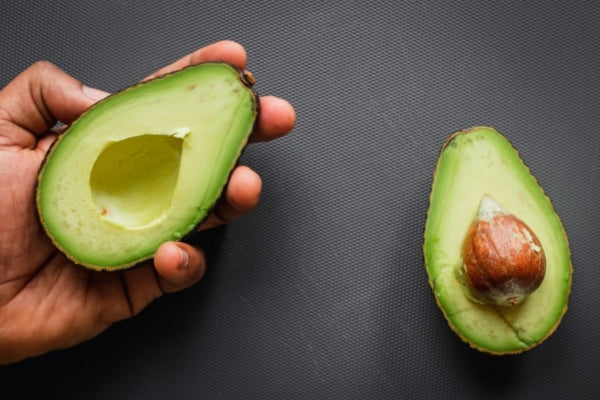

Cooking More At Home These Days Because of Corona? Here’s How To Make Meals Healthy
Because of stay-at-home orders during the early stages of the pandemic, the continued closure of many restaurants nearly half a year later, combined with the apprehension of going out in public, more people are cooking at home these days. That’s both a good thing and a bad thing.
I’ll explain the paradox and also provide some tips on quick, healthy meal creation.

What Restaurants won't tell you: bad for you oils
Supporting local businesses has never been more important. And going to a restaurant, even if there’s the minor annoying inconvenience of having to wear a mask before you’re seated, is a pleasurable experience.
But here’s the thing about eating out versus cooking at home. Even at a relatively healthy restaurant, you have no idea what ingredients the cooks are using. Whereas at home, you’re in complete control.
For example, you may think that the veggie stir-fry dish at your fav Asian-fusion bistro is loaded with antioxidants and super good for you. But the dirty little secret that nearly every restaurant doesn’t want you to know about is that they use cheap cooking oil.
The majority of restaurants use vegetable seed oils that they can purchase in bulk. The two most common offenders are soybean oil and canola oil. Now, the phrase, “vegetable oil” probably sounds healthier to you than “lard” or “saturated fatty oil.” But in reality, when it comes to coating the frying pan or skillet, it’s much healthier NOT to use vegetable oil.
And here’s why: when exposed to heat, vegetable oils turn rancid very quickly; they oxidize. That’s because they lack the saturated fat necessary to remain chemically stable.
What does that mean for your health when oils go rancid? It means a greater risk of developing cardiovascular disease and other chronic health issues (as this study suggests). Using vegetable oils (with the exception of avocado and olive oils, which are technically fruit oils, not veggie oils) and consuming them often in restaurants hardens your arteries.
Canola oil is no safer than soybean oil. In fact, a 2017 study links canola oil consumption with worsened memory, worsened learning ability and weight gain in mice. While it’s true that mice aren’t people, mice are often used in studies to model Alzheimer's disease patterns. So if you don’t want your brain to turn into jelly, stop eating out so much and start cooking more at home without using vegetable-based seed oils.
Even if you cook vegetable oils at a low temperature, or for a brief period of time like a saute, you’re not safe. That’s because veggie oils often become rancid even before they are used for cooking, for two reasons: the high temperatures during the transportation of the oils from manufacturer to the supermarket, and the bright light of the supermarkets, which easily penetrates the clear bottles of vegetable oil. The lesson here is that both heat and light spoil the oil!
So when you’re cooking at home, I recommend using avocado oil, grass-fed butter or coconut oil for high-temperature cooking. (There is some risk of using coconut oil for people susceptible to high cholesterol; use it sparingly and with caution if you have high cholesterol.) At many supermarkets these days, you can find spray avocado oil, which I personally use and think is best for cooking healthy meals.

Baking More At Home? Make Muffins Healthier By Doing This....
Covid-19 has led to a baking bonanza. With flour flying off of shelves, thousands of beginner bakers have transformed their kitchens into a baked-good paradise. While baking makes for a welcome distraction from depressing news about coronavirus, eating muffins, cookies and other baked goods has led to the phenomenon known as The Quarantine 15.
But don’t despair. I’m not preaching that you should quit baking. What I’m saying is that just like cooking oil, there’s healthier flours to bake with. The two best flours to replace conventional flour, which is a major contributor to type 2 diabetes and other metabolic diseases, are almond and coconut flour. Almond flour is higher in protein, whereas coconut flour is higher in fat. (Again, if you have high triglycerides and other cholesterol markers, limit your intake of coconut oil.)
Because almond flour is higher in protein and lower in carbohydrates than conventional flour, it doesn’t cause blood sugar fluctuations.
So if you want to bake until your heart’s content (and your stomach), learn how to make yummy treats healthier with almond or coconut flour.

Making Healthy Meals Fast
For those not used to cooking at home so much, the biggest inconvenience is the amount of time it takes to make meals. Yes, it’s true that cooking takes time if you want to avoid processed, microwaved meals. Here’s my suggestion for making healthy meals fast…
Take one day a week that you have the most free time to prepare two or three large amounts of healthy meals. For each meal, include three main staples in the following categories:
- Low-starch grains: Quinoa, buckwheat, wild rice, brown rice
- Veggies: steamed broccoli, green beans, cauliflower
- Lean protein: Fish, vegetarian sources such as legumes and peas
For my complete list of what to eat and what not to eat, click here or check out what I think the official food pyramid should look like:

Although it may take an hour or so of your time to cook these meals, they will last you and your family at least a few days to a week. You can quickly reheat the meals in a microwave.
And that my friends is how you make cooking at home healthy. Just make sure you avoid late-night snacking, and to lose weight, don’t eat a huge breakfast. Instead, flood your cells with the most nutrient-dense green, leafy veggies with Chef V Organic Green Drink.
To your health, Veronica
